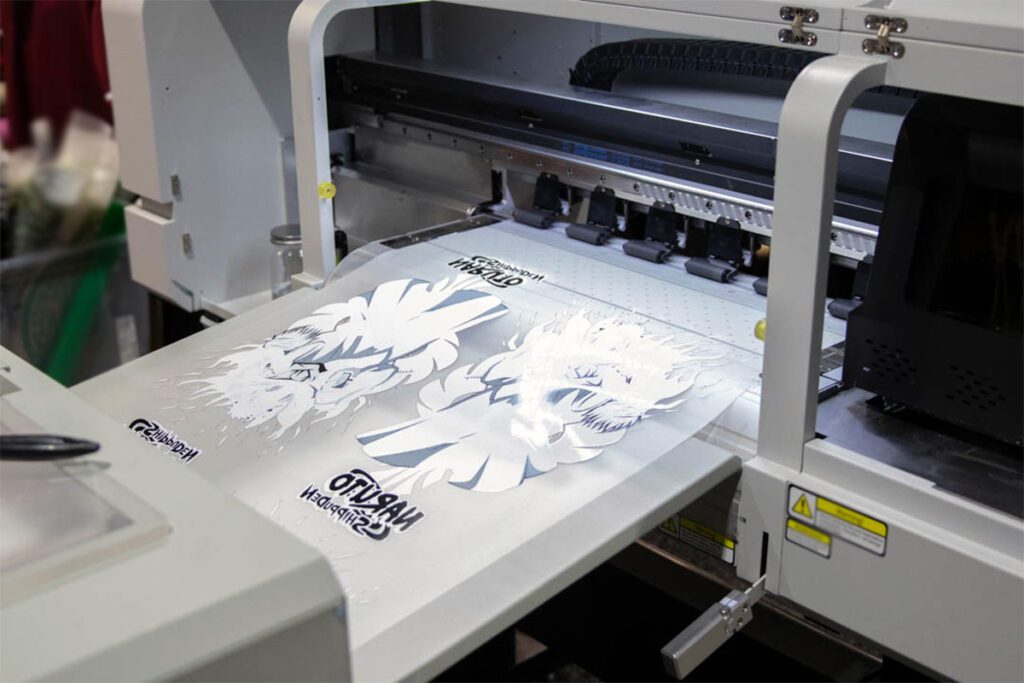DTF Printing Mastery: Raise Your Fabric Creations with Direct-to-Film Technology
DTF Printing Mastery: Raise Your Fabric Creations with Direct-to-Film Technology
Blog Article
The Future of Fashion: Exploring DTF Printing Technology in the Fabric Industry
Among these improvements, Straight to Movie (DTF) printing modern technology has actually emerged as an encouraging competitor, using one-of-a-kind abilities and possibilities for designers and manufacturers alike. This advanced printing method has triggered passion due to its prospective to reinvent typical textile printing processes.
Evolution of Textile Printing
From the ancient people utilizing strategies like block printing to the digital transformation of today, fabric printing has consistently pressed borders. As the craft spread to other parts of the world, new techniques such as screen printing and roller printing emerged during the Industrial Transformation, changing the fabric sector.
The introduction of electronic fabric printing in the late 20th century marked a considerable change towards more sustainable and flexible printing methods. The advancement of textile printing showcases an abundant background of creativity, resourcefulness, and technological progression in the world of fashion and style.
Advantages of DTF Technology
With the advancement of textile printing techniques from ancient methods like block printing to contemporary innovations such as electronic printing, the introduction of Direct-to-Fabric (DTF) modern technology has actually considerably boosted the efficiency and sustainability of textile printing procedures. One of the main advantages of DTF technology is its capacity to directly publish styles onto material without the demand for transfer papers, which minimizes waste and streamlines the manufacturing process. Furthermore, DTF printing enables better color vibrancy and detail accuracy compared to traditional techniques, making it possible for fabric manufacturers to produce intricate and top quality layouts with ease.
Furthermore, DTF modern technology is recognized for its convenience, as it can be made use of on numerous kinds of fabrics, including natural fibers like wool, cotton, and silk, along with synthetic materials such as polyester and nylon (DTF Printing). This adaptability opens a large range of opportunities for designers and manufacturers to trying out various textures and products, resulting in more cutting-edge and special products in the fashion business. In general, the implementation of DTF technology stands for a considerable advancement in textile printing, using numerous advantages that add to the future sustainability and imagination of the industry
Sustainability in Style Manufacturing
Highlighting environmentally friendly techniques is vital in contemporary style production, aligning with the growing customer demand for sustainable products. In recent times, the fashion business has actually dealt with increasing examination due to its considerable environmental effect, including too much water use, chemical air pollution, and textile waste. As an action, lots of fashion brand names are now including sustainable techniques right into their production procedures to reduce harm to the atmosphere.
Sustainability in style production incorporates numerous elements, such as using recycled and natural products, lowering power usage, executing honest labor methods, and advertising transparency throughout the supply chain. Furthermore, improvements in modern technology, like DTF printing, deal chances to even more improve sustainability in fabric manufacturing. This innovation allows exact printing on materials, lowering ink waste and water usage compared to conventional printing techniques.
Style Flexibility and Personalization

In addition, DTF printing assists in modification on a range previously unattainable, enabling for personalized clothes and distinct items customized to individual preferences. Overall, DTF printing technology revolutionizes the layout landscape in the fabric market, providing endless possibilities for creative expression and customized fashion.
Effect On Supply Chain & Market Trends
DTF printing modern technology in the fabric market is reshaping supply chain linked here characteristics and influencing market trends with its efficiency and modification capacities. By enabling on-demand printing and removing the need for huge stocks, DTF modern technology improves the supply chain procedure. Manufacturers can produce things as needed, decreasing waste and storage prices. This just-in-time production model likewise permits quicker response to market needs and patterns, bring about a more responsive and nimble supply chain.
Moreover, the modification capacity of DTF printing modern technology is revolutionizing the market patterns in the textile industry. As a result, DTF modern technology is driving a change towards more customer-centric and cutting-edge methods within the textile market, forming the future of fashion.

Conclusion
Finally, DTF printing modern technology is reinventing the fabric sector by providing numerous benefits such as layout personalization, sustainability, and liberty. This innovative modern technology is reshaping the future of style redirected here manufacturing, affecting supply chains, and driving market patterns towards extra eco-friendly and effective practices. As the industry continues to evolve, DTF printing will play a crucial duty fit the way fabrics are produced and eaten in the years to come.
From the ancient civilizations making use of techniques like block printing to the digital revolution of today, fabric printing has actually constantly pressed borders. As the craft spread to other parts of the world, new approaches such as screen printing and roller printing arised throughout the Industrial Revolution, revolutionizing the textile market.
The introduction of electronic textile printing in the late 20th century marked a considerable shift in the direction of even more sustainable and flexible printing approaches.With the development of fabric printing methods from old methods like block printing to modern developments such as digital printing, the introduction of Direct-to-Fabric (DTF) modern technology has dramatically improved the effectiveness and sustainability of textile printing processes (DTF Printing).In response to the necessary shift towards sustainability have a peek at this website in style manufacturing, the fostering of innovative technologies like DTF printing not just addresses environmental issues however also opens up avenues for unparalleled layout liberty and modification in the fabric sector
Report this page